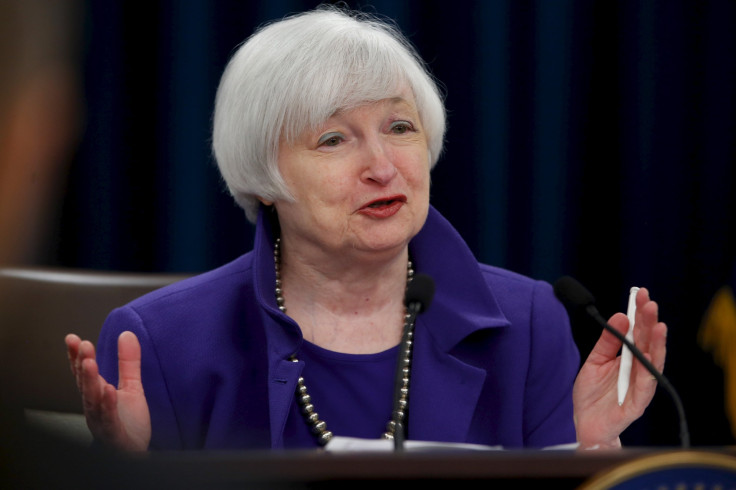Fed Holds Interest Rates Steady Amid Global Market Angst

After a bruising month for international markets, the Federal Reserve’s rate-setting committee opted Wednesday to keep interest rates steady. The announcement was largely anticipated by investors, expecting the benchmark rate to remain at the current range of 0.25 percent to 0.5 percent.
But the text of the statement provided telling insights into the Fed’s broader economic outlook, as well as the odds of a rate hike in March. In contrast to December's relatively sanguine release, the Fed's January statement sounded a more dovish tone, noting: "Economic growth slowed late last year."
Fed Chair Janet Yellen and fellow members of the Federal Open Market Committee saw fit to note they are “closely monitoring global economic and financial developments" for their impacts on labor markets and inflation — newly inserted language that mirrors a similar note in the committee’s statement from September.
Global markets have taken a pounding in January, buffeted by the sustained decline of crude oil and commodity prices, which many investors took as a sign of tapering global growth. European and Japanese stocks, meanwhile, have entered bear market territory, and the Standard & Poor’s 500 index has dropped 7.2 percent.
The market headwinds have presented a quandary for the Fed, which in December began its first monetary-tightening cycle in nine years, predicated on continued economic expansion. At that meeting, Fed officials indicated that they expected four rate increases by the end of 2016. Futures markets, however, lean toward a probability of just one rate increase.
Fed officials usually stand somewhat aloof from the vacillations of the financial markets, assuring investors that their decision-making is “data dependent” and tied to economic fundamentals. But when market angst threatens to spill over into the domestic economy, the Fed takes notice.
In recent months, policymakers have homed in on the twin trends of a strengthening dollar and falling oil prices, which have depressed core inflation measures to well below the Fed’s 2 percent target. “That’s going to constrain how much the Fed can move, regardless of volatility,” Robin Anderson, senior economist at Principal Global Investors, said.
Oil market woes in particular could keep the Fed from enacting the four rate hikes that policymakers had projected for 2016, said John Vail, chief global strategist of Nikko Asset Management in New York. “The Fed should hire a dozen oil-drilling analysts,” Vail said. “They might know better what’s going to happen to the global economy than econometricians.”
Still, Vail said, global markets are “not the Fed’s highest priority right now.” Fed officials have been eager to see signs of labor markets approaching full capacity and business investment firming up.
On the broader domestic front, however, the picture is mixed. Retail sales dropped unexpectedly in December, underscoring an economic slowdown in the fourth quarter of 2015. The manufacturing sector, hobbled by falling export demand, fell into two straight months of contraction at the end of the year, according to the Institute for Supply Management.
The Fed statement, coming after the rate-setting committee's regular two-day meeting, noted that inventory investment had slowed toward the end of 2015, while household spending increased at a merely "moderate" rate, a downgrade from December's "solid" spending growth.
None of those weaknesses extended into employment or housing, however. Job growth remained solid throughout 2015 despite wage growth remaining tepid. Housing prices and new-home sales accelerated into the end of the year, a positive indicator for middle-class Americans.
The Fed is tasked with maximizing employment and keeping prices stable, chiefly by adjusting the benchmark interest rate banks pay to borrow funds.
All told, the Fed’s statement seemed to weigh on investors' expectations for an interest rate hike following the Fed’s March meeting. Wednesday morning, futures prices reported by the CME Group indicated a 33 percent chance that the Fed would move again in March. A half hour after the statement was released, those implied odds dipped to 27 percent.
© Copyright IBTimes 2024. All rights reserved.





















